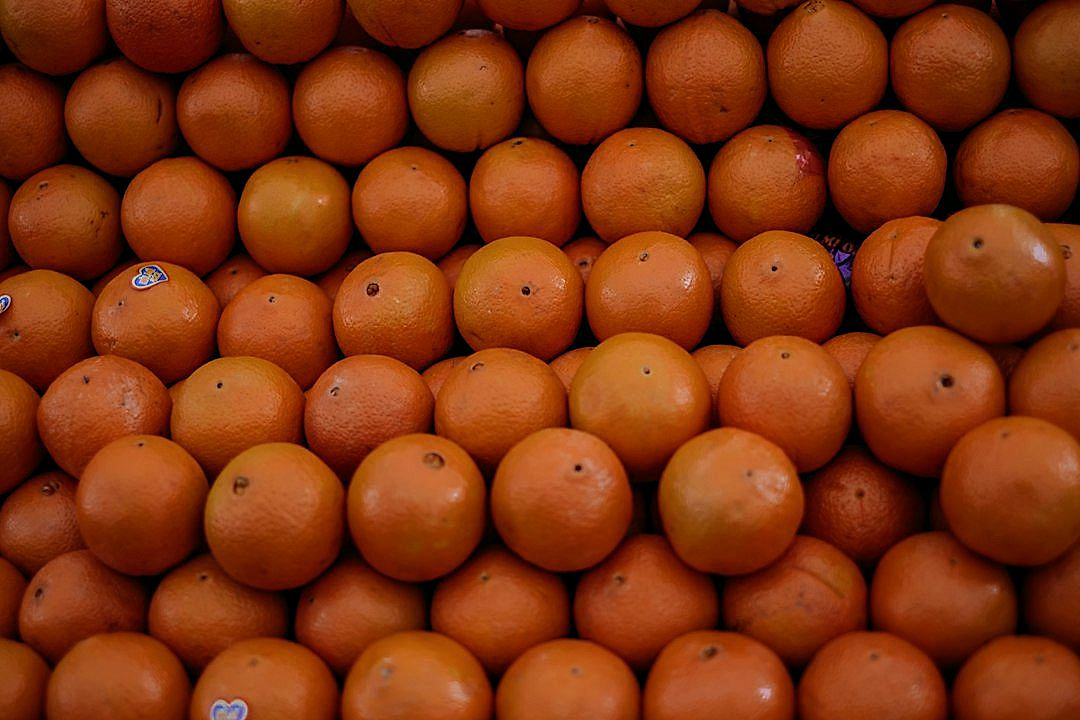As advancements in technology continue to emerge, methods for accurately predicting consumer demand have become a critical component in the produce processing industry.
By utilizing effective demand forecasting procedures, businesses can gain a competitive edge, balancing supply and demand, while maximizing profitability.
This post delves into several practical and innovative strategies that can enhance accuracy in prediction models.
Inefficient supply chain management can lead to waste, squandering resources, and potential profit loss.
Understanding forecasting techniques can substantially mitigate these risks.
From data utilization to leveraging Machine Learning algorithms, we discuss different pathways to achieve optimal performance.
Contents
Techniques For Demand Forecasting In Produce Processing
1. Analyzing Historical Sales Data
Historical sales data serves as a valuable resource when it comes to demand forecasting.
By scrutinizing the past sales data, companies can gain insight into the buying behaviors of their customers, helping them predict future trends.
For entities in the produce processing industry, this involves studying the sales volumes of different types of processed products over time.
The details embedded within these datasets provide a comprehensive view of the market, allowing organizations to anticipate future sales patterns with a higher degree of accuracy.
Various time periods such as daily, monthly, quarterly, and annual sales can be analyzed to understand seasonal fluctuations in demand.
The sales trends identified through this kind of analysis form the basis for projecting future sales volumes for each product.
It’s worthy to note, however, that while historical data is beneficial for forecasting demand, these projections should not rely solely on past sales.
Changes in the market, shifts in consumer behavior, and numerous other factors can cause future demand to deviate significantly from historical patterns.
Therefore, while analyzing historical sales data provides a solid starting point for demand forecasting, it should be complemented with other techniques such as market analysis and identifying trends.
Another way that historical sales data is useful is in understanding how different factors affect demand.
For instance, price changes, promotions, and other marketing strategies can be linked to changes in sales volumes, providing insight into how different strategies impact demand.
The effectiveness of different strategies can be assessed, and this information can be used to optimize future strategies for better demand management.
Additionally, analyzing historical sales data can help identify relationships between sales volumes of different products.
Some products may have complementary relationships, where the sales of one product increase when the sales of another product increase, while others may have a competitive relationship, where the sales of one product decrease when the sales of another product increase.
Understanding these relationships can aid in demand planning and stock management for different products.
In the world of produce processing, this type of analysis can be used to predict demand for various processed goods and plan production schedules accordingly.
In conclusion, analyzing historical sales data forms an integral part of demand forecasting in the produce processing industry, aiding in predicting sales volumes, understanding the effects of different strategies on demand, and planning production schedules.
2. Market Research and Analysis
In the context of demand forecasting in produce processing, the role of market research and analysis cannot be overstated.
It moves beyond providing a snapshot of current sales or historic performance and delves into the realms of market behaviors, customer preferences, and industry trends.
The process starts with the identification of your target market, understanding who your customers are, and what their unique needs and preferences entail.
This stage involves a comprehensive analysis of demographic data, buying habits, and consumption patterns, which significantly influence the demand for various produce.
Carrying out market segmentation can further deepen this understanding, dividing the broader market into sub-sections based on shared characteristics, be it demographically, based on behavior, or buying preferences.
Effective market segmentation can contribute to demand forecasting by providing insights into how different market sections may react to changes in price, quality, or availability of produce.
This is followed by competitive analysis, assessing the strategies employed by your competitors, their product offerings, and market perception.
This analysis further informs demand forecasting by helping you gauge the potential impact of new entrants in the market, alterations in your competitors’ strategies, or changes in their product offerings.
Engaging in continuous tracking and monitoring of your competition can provide timely insights, aiding in predictive analysis.
Moreover, understanding the broader socio-economic factors and global trends that influence market behaviors plays a vital role in demand forecasting.
These may include factors like shifting dietary patterns, increased awareness towards organic produce, or global events like pandemics affecting buying behaviors and supply chains.
Monitoring such events calls for consistent engagement with market news and regular interaction with stakeholders within the industry.
Finally, market research and analysis in demand forecasting extends to the evaluation of marketing and promotional efforts for their effectiveness.
Understanding how different campaigns have influenced demand patterns in the past can guide future forecasting.
For instance, a successful campaign promoting the health benefits of a specific produce may lead to a spike in its demand which can be anticipated and managed with accurate forecasting.
The integration of all these elements of market analysis paints a holistic picture of the market, enabling more robust and accurate demand forecasts in produce processing.
3. Utilizing Seasonal Demand Patterns
As producers and processors, it is crucial to understand and utilize seasonal demand patterns to anticipate future product needs effectively.
This process typically begins with an analysis of historical sales data to detect patterns in the consumption of specific products in different seasons or periods.
Consider, for example, how the demand for certain fruits or vegetables may spike during their harvest season due to their improved taste and abundance.
Alternatively, the demand for certain processed products, like canned fruits or refrigerated vegetables, might peak during off-season periods when fresh produce is out of reach.
Seasonal demand patterns can also be influenced by cultural events or holidays when some produce are typically consumed.
In practice, the understanding and application of these patterns can contribute significantly to streamlining inventory management operations, improving production planning, and reducing costs.
Therefore, acknowledging and integrating these insights of seasonal consumptions into demand forecasting can play a big role in enhancing the overall market strategy and profitability.
Moreover, acknowledging this cyclical nature can help companies strategically price their products to maximize revenues.
For instance, they can take advantage of high demand periods to charge premium rates and lower them during off-peak seasons to clear out stocks and attract price-sensitive consumers.
Different regions have different climatic conditions that lead to varying seasonal patterns and hence, demand for certain produce.
Therefore, if a company processes and supplies products across multiple regions, they should consider these variations in their demand forecasting.
Without a doubt, harnessing the power of seasonal demand patterns requires an in-depth understanding of the market, consumer preferences, and the influence of external factors.
The availability and analysis of adequate and accurate data is vital in making solid forecasting decisions using this approach.
At the same time, companies need to consider the potential impact of unexpected events like weather anomalies or other unforeseen changes that could disrupt predicted patterns.
In general, despite being a traditional technique, properly leveraging seasonal demand patterns in demand forecasting can result in a significant competitive advantage and enhance overall performance and profitability.
4. Identifying Market Trends
An essential pillar in demand forecasting for produce processing involves identifying market trends.
Distant knowledge of the market, consumer behavior, and the factors driving these dynamics offers an unbeatable competitive edge.
With a precise understanding of the market trends, produce processors can anticipate changes and adapt their strategies effectively.
Identifying these trends provides clarity and helps decision-makers to make proactive and data-driven decisions.
Without a doubt, understanding the direction and momentum of the market goes a long way in shaping the strategic initiatives of a business in the produce processing industry.
Market trends are driven by numerous factors, such as economical cycles, climate changes, technological advancements, societal behaviors and political movements.
A profound understanding of the market trends allows a business entity to facilitate product development and marketing strategies accordingly.
Identifying market trends is not a one-off task; it’s an ongoing effort.
The market trends are not static; they are frequently changing, hence the need for continuous tracking as part of the demand forecasting process.
Considering the significance of this process, many businesses invest heavily in market research and data analysis equipment and technologies.
Getting a pulse on the market trends requires an analytical mindset and the ability to validate and interpret data accurately.
The most successful companies don’t only stay updated with the trends; they also predict future ones.
This forecasting is based on data-driven insights and extensive market research.
It’s critical not to ignore the micro-trends within the industry as they can eventually develop into macro-trends.
When observed and interpreted correctly, trends can allow produce processors to accurately forecast consumer demand and plan accordingly.
In essence, identifying market trends serves as a powerful tool in the armoury of any business in-demand forecasting, influencing critical business strategies related to production, sales, marketing and distribution processes.
5. Applying Statistical Forecasting Models
The process of applying statistical forecasting models is a critical step in demand forecasting in produce processing.
These models provide a mathematical approach to forecast future demand, taking into account historical sales data, market trends, and seasonal changes.
The use of statistical forecasting models improves the accuracy and reliability of the demand forecast, contributing to better planning and decision-making processes within the business.
There are various types of statistical forecasting models to choose from, each suiting different scenarios and datasets.
One such model is the time series model, which leverages data from various points in time to predict future demands.
For example, the exponential smoothing method, a type of time-series model, gives more recent data greater weight in the forecast estimate.
Another model is the regression model, which identifies relationships between demand and one or more independent variables, such as price, promotional activities, or economic indicators.
When selecting a statistical forecasting model, it’s essential to consider the model’s assumptions and ensure they align with the distribution and nature of your own data.
In addition, it’s crucial to validate the model’s performance through techniques like cross-validation, looking at its ability to accurately forecast unseen data.
The statistical model’s results should provide reliable demand forecasts that can weather uncertainties and fluctuations in produce processing market.
This helps drive effective supply chain management, optimizes inventory levels, and ensures customer demand is consistently met, thus improving operational efficiency, customer satisfaction, and financial performance.
Finally, it’s important to remember that even the most precise statistical model can’t capture every variable impacting demand, which is why it’s critical to continually refine and update the model to reflect ongoing changes in consumer behaviour, market condition, as well as other unforeseen circumstances.
Overall, the implementation and application of statistical forecasting models in demand forecasting is a highly technical but extremely valuable process for any produce processing business.
It necessitates a deep understanding of both statistical principles and the specific characteristics of the produce processing industry.
However, all the effort put into applying these models ultimately aids in making better, data-driven decisions, which is key for the long-term success of a business.
The Bottom Line
Drawing from a thorough investigation of historical sales data, comprehensive market research, and identification of market trends, it becomes evident that these factors play an influential role in making accurate forecasts.
The utilization of seasonal demand patterns further enhances the precision of these predictions.
Moreover, the application of sophisticated statistical forecasting models is crucial in refining such projections.
All these elements interweave to reveal a clear, coherent picture of potential market behavior.
Thus, for a business aiming for sustainability and growth, it is integral to incorporate these tools and techniques into its strategic planning process.




